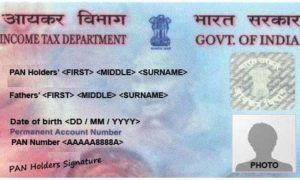Know what to do with your inactive and dormant bank account
In the banking sector, maintaining the activity of bank accounts is crucial for both customers and financial institutions. When a savings or current account remains inactive for an extended period, it is classified as inoperative or dormant. To ensure proper management and compliance, banks are also required to follow guidelines set by the RBI. At the same time, customers also enjoy certain rights to reclaim their accounts and get the deposits.
Read More: Hospitalisation claims up over 11% in FY24, heart and kidney procedures top the list: report
When Does a Bank Account Become Inactive
A savings or current account is classified as inoperative or dormant if there are no transactions for over two years. Such inactive accounts must be segregated and maintained in separate ledgers by banks.
Unclaimed Deposits
Savings or current account balances that remain unoperated for 10 years, or term deposits that are not claimed within 10 years of maturity, are classified as “Unclaimed Deposits.”
These funds are transferred by banks to the “Depositor Education and Awareness” (DEA) Fund managed by the Reserve Bank of India. However, depositors retain the right to claim their deposits from the respective bank at a later date, along with any applicable interest.
Read More: PM-KISAN 18th Installment To Be Released on October 5: How To Apply? Check Beneficiary Status
Does the Bank Give Interest On an Inoperative Account?
According to RBI regulations, interest on savings bank accounts must be credited regularly, regardless of whether the account is active. Additionally, if a Fixed Deposit matures and the proceeds remain unpaid, the unclaimed amount held by the bank will earn interest at the savings bank rate.
According to State Bank of India, a savings or current account will be considered inoperative if there are no ‘customer-induced transactions’, such as;
The transactions in account which are in the nature of:
- A financial transaction initiated by the account holder or on their behalf by the bank or a third party, such as cash withdrawals/deposits, RTGS, NEFT, NACH, dividend payments, etc., or;
- A non-financial transaction initiated by the account holder, such as an inquiry or a request for any product/service through an ATM, internet banking, or mobile banking app, or via Third Party Application Providers, which involves two-factor authentication (2FA) and leaves an audit trail, or a successful login to internet/mobile banking applications, or;
- KYC updates are conducted in person or through digital channels like Internet banking or mobile banking apps.
Impact of an Account Become Inoperative:
Once an account is classified as inoperative, debit transactions will be prohibited unless new KYC documents are submitted.
How To Revive An Inoperative Bank Account:
Process of activation of Accounts:
- Customers with an inoperative account are required to visit the bank with their latest KYC documents.
- A formal request must be submitted to the branch for account activation.
- The branch will reactivate the account upon verification of the submitted KYC documents.
- Once activated, customers will be notified via SMS or email.
- All account activation requests will be processed within three working days from the receipt of the complete application.





































